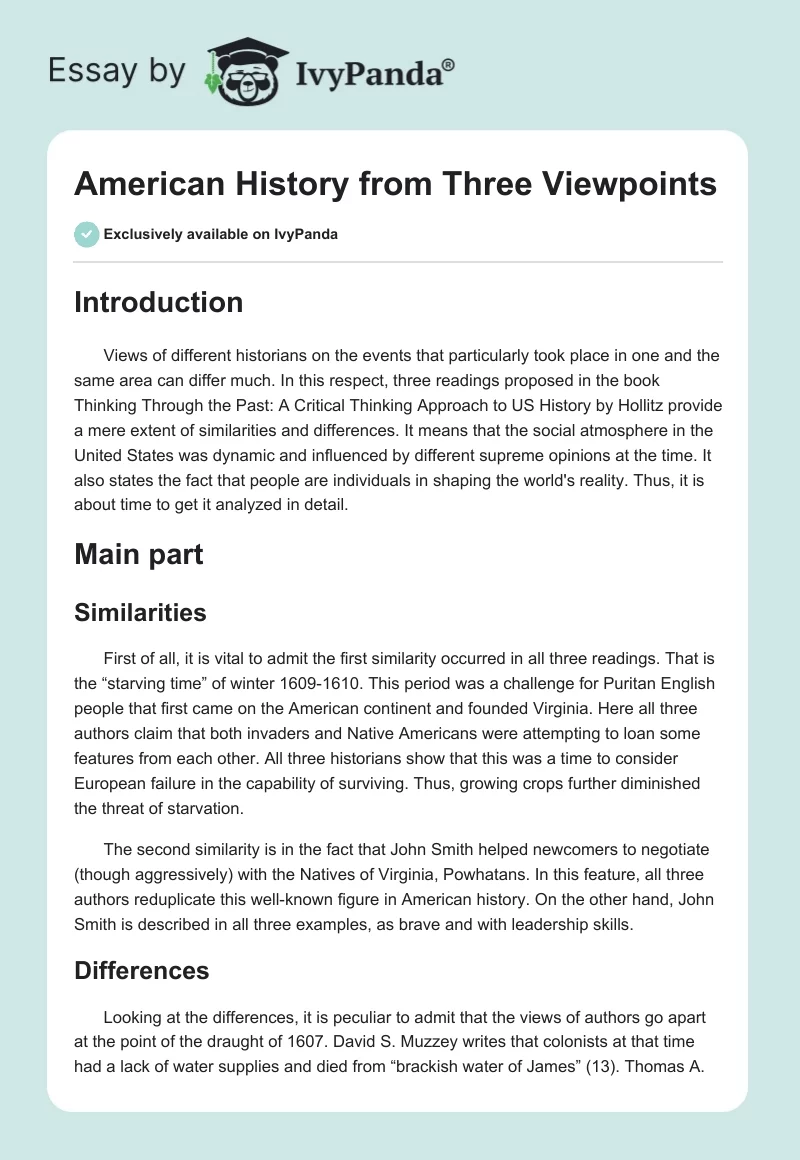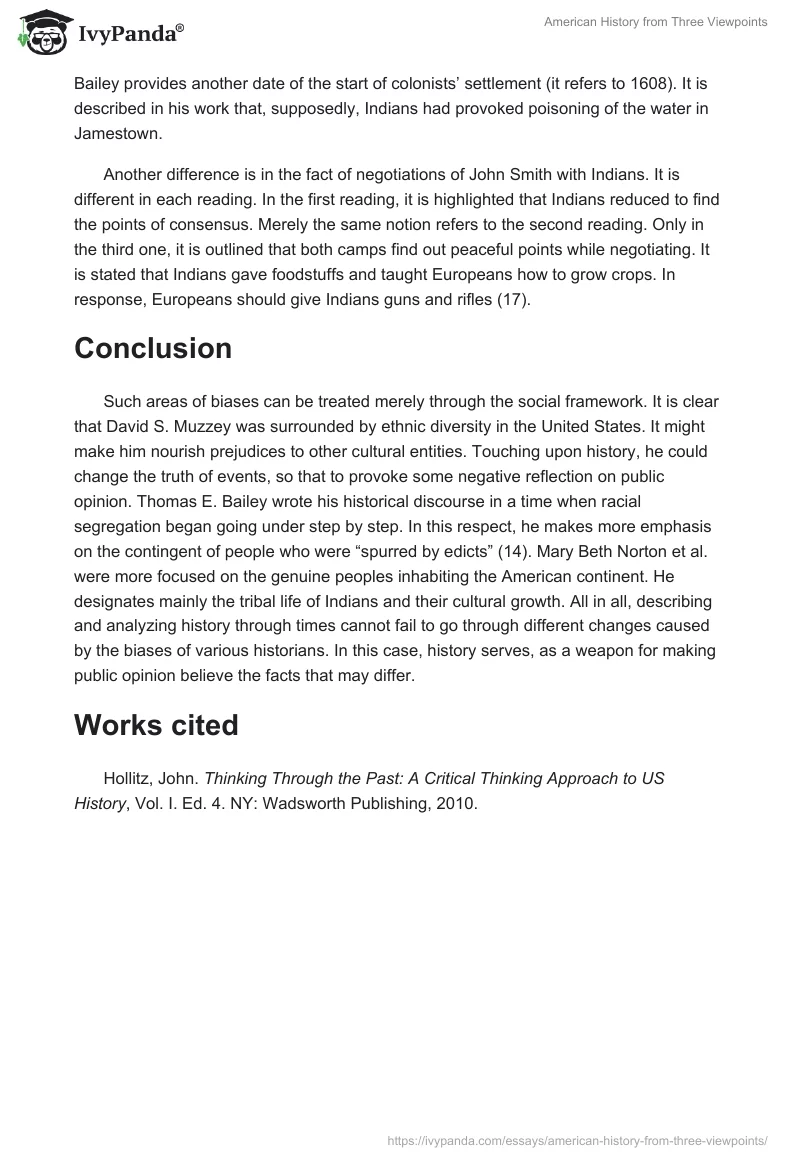Introduction
Views of different historians on the events that particularly took place in one and the same area can differ much. In this respect, three readings proposed in the book Thinking Through the Past: A Critical Thinking Approach to US History by Hollitz provide a mere extent of similarities and differences. It means that the social atmosphere in the United States was dynamic and influenced by different supreme opinions at the time. It also states the fact that people are individuals in shaping the world’s reality. Thus, it is about time to get it analyzed in detail.
Main part
Similarities
First of all, it is vital to admit the first similarity occurred in all three readings. That is the “starving time” of winter 1609-1610. This period was a challenge for Puritan English people that first came on the American continent and founded Virginia. Here all three authors claim that both invaders and Native Americans were attempting to loan some features from each other. All three historians show that this was a time to consider European failure in the capability of surviving. Thus, growing crops further diminished the threat of starvation.
The second similarity is in the fact that John Smith helped newcomers to negotiate (though aggressively) with the Natives of Virginia, Powhatans. In this feature, all three authors reduplicate this well-known figure in American history. On the other hand, John Smith is described in all three examples, as brave and with leadership skills.
Differences
Looking at the differences, it is peculiar to admit that the views of authors go apart at the point of the draught of 1607. David S. Muzzey writes that colonists at that time had a lack of water supplies and died from “brackish water of James” (13). Thomas A. Bailey provides another date of the start of colonists’ settlement (it refers to 1608). It is described in his work that, supposedly, Indians had provoked poisoning of the water in Jamestown.
Another difference is in the fact of negotiations of John Smith with Indians. It is different in each reading. In the first reading, it is highlighted that Indians reduced to find the points of consensus. Merely the same notion refers to the second reading. Only in the third one, it is outlined that both camps find out peaceful points while negotiating. It is stated that Indians gave foodstuffs and taught Europeans how to grow crops. In response, Europeans should give Indians guns and rifles (17).
Conclusion
Such areas of biases can be treated merely through the social framework. It is clear that David S. Muzzey was surrounded by ethnic diversity in the United States. It might make him nourish prejudices to other cultural entities. Touching upon history, he could change the truth of events, so that to provoke some negative reflection on public opinion. Thomas E. Bailey wrote his historical discourse in a time when racial segregation began going under step by step. In this respect, he makes more emphasis on the contingent of people who were “spurred by edicts” (14). Mary Beth Norton et al. were more focused on the genuine peoples inhabiting the American continent. He designates mainly the tribal life of Indians and their cultural growth. All in all, describing and analyzing history through times cannot fail to go through different changes caused by the biases of various historians. In this case, history serves, as a weapon for making public opinion believe the facts that may differ.
Works cited
Hollitz, John. Thinking Through the Past: A Critical Thinking Approach to US History, Vol. I. Ed. 4. NY: Wadsworth Publishing, 2010.


